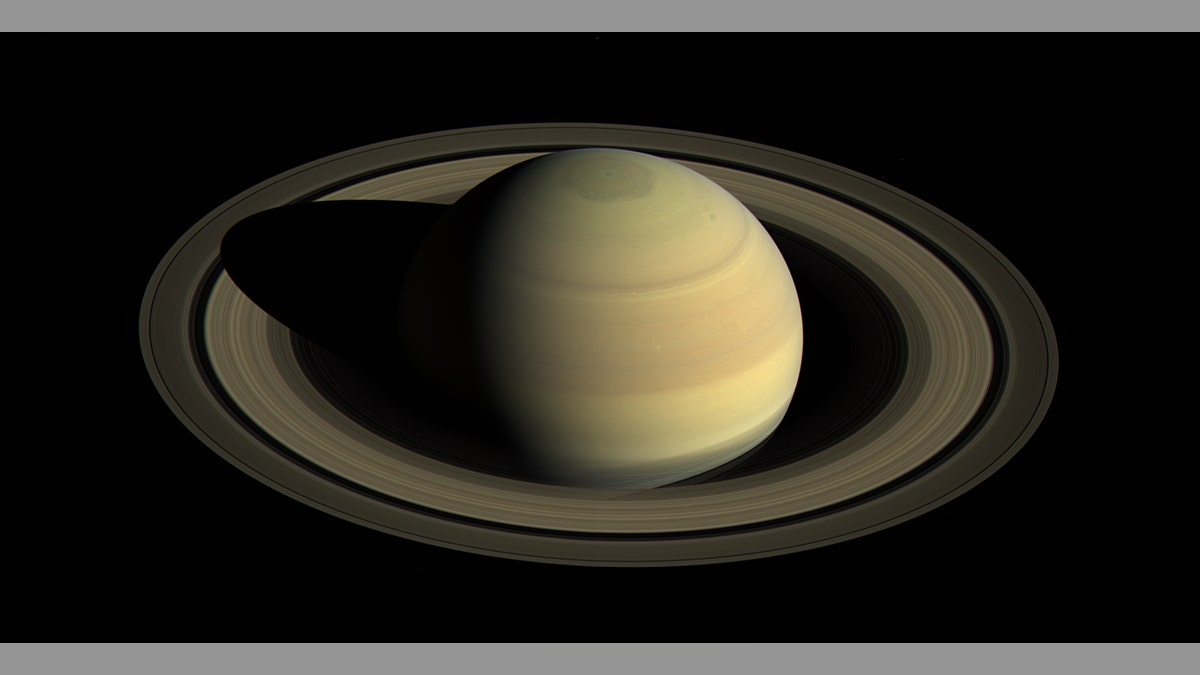
Saturn. (NASA/JPL-Caltech/Space Science Institute)
NASA’s Cassini space probe recently discovered what is thought to be the largest body of liquid on Saturn’s Titan moon — and now the space agency wants to go swimming.
In 2008 the 400,000sq km ocean was named Kraken Mare after a legendary sea monster. Not long after, scientists at NASA began dreaming up ways to explore it.
The agency’s idea — as ambitious as it may be — is to send an autonomous submarine.
Titan is the only place in our solar system where we’ve found surface liquids and, as the thinking goes, where there is water, there is probably life.
However it would have to be a pretty resilient life form given that the rivers and lakes on Titan’s surface carry a lethal mixture of methane and ethane.
The proposed submarine being considered by NASA would autonomously carry out detailed scientific investigations under the surface of Titan’s northern ocean, providing unprecedented knowledge of an extraterrestrial sea and expanding NASA’s existing capabilities in planetary exploration to include nautical operations, the space agency says.
Concepts for exploring extraterrestrial oceans have been proposed in the past but they usually centered on more simple ideas like sending down suspended probes.
“As such no one has yet envisioned what such a craft might look like, how it would operate or if it could be built,” NASA’s mission website says.
Nonetheless the space agency has mapped out a conceptual mission design for the Titan Submarine and is considering pursuing the lofty mission within the next 20 years.
It’s 886 million miles to Titan, so it would require a pretty serious spacecraft to get the submarine there. But if it does happen, the University of Washington has been helping NASA simulate the condition such a vehicle would encounter upon arrival.
This month the WSU research team announced they had built a test chamber to house a liquid mixture at very cold temperatures to simulate the -184C Kraken sea.
One thing researchers are looking at is bubbles. A submarine powered by a heat-producing machine in the very cold Titan liquid will cause nitrogen bubbles to form and too many bubbles would make it hard to manuever the ship.
The group also studied the freezing temperatures for methane and ethane lakes and determined that, because of a small amount of nitrogen in the liquid, the lakes freeze at lower temperatures than they expected.
“That’s a big deal,’’ said researcher Ian Richardson. “That means you don’t have to worry about icebergs.”
If the mission goes ahead, it will represent a new frontier of space exploration.
“By addressing the challenges of autonomous submersible exploration in a cold outer solar system environment, Titan Sub serves as a pathfinder for even more exotic future exploration of the sub-surface water oceans of (Jupiter’s moon) Europa,” NASA says.
Watch this space.
This story originally appeared in news.com.au.




















